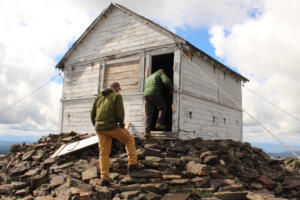The return of wolves to the West has always been contentious, and the deaths last fall of more than 40 cattle in western Colorado really alarmed ranchers. But here’s the true story: Wolves did not kill those cattle found dead near Meeker.
After months of investigation, the state agency, Colorado Parks and Wildlife, found no evidence of wolves in the area at all.
Yet, when the news of the cattle deaths went public last October, the agency issued a press release stating it was “investigating a report of dead domestic cow calves on White River National Forest lands near Meeker that show damage consistent with wolf depredation.”
A month later, the agency’s Northwest regional manager testified before the Colorado Parks and Wildlife Commission that some of the cattle had injuries that appeared to come from wolves, then added: “It’s perplexing; it’s confusing; it’s frustrating, trying to figure out exactly what occurred in this incident.” The story of wolves as the culprits, however, made national headlines.
Wolves are coming back to Colorado naturally. In 2020, Colorado voters passed Proposition 114, mandating restoration of wolves by the end of this year. Through a Colorado Open Records Act request, the Humane Society of the United States obtained documents and photos about the livestock deaths, and shared them with Carter Niemeyer, an expert on wolf-livestock conflict and a member of the state’s Technical Working Group on wolf restoration.

